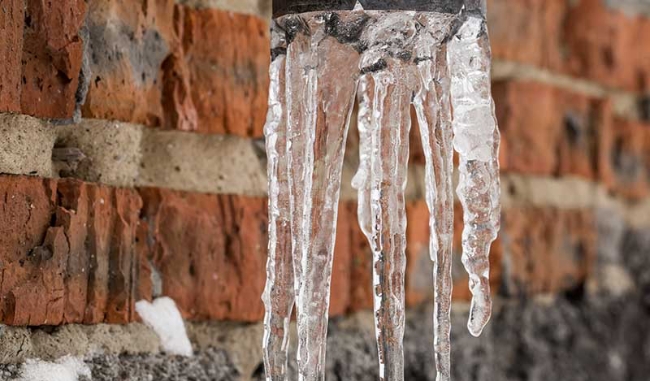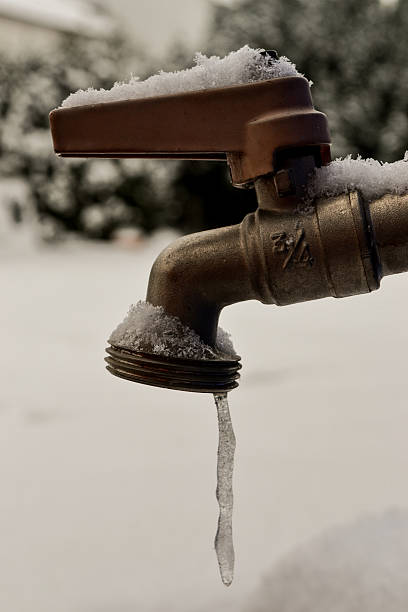Avoiding Frozen Plumbing in Cold Weather: Essential Advice
Avoiding Frozen Plumbing in Cold Weather: Essential Advice
Blog Article
Here further down you can discover additional sound data on the subject of How To Avoid Freezing Pipes.

Cold weather can wreak havoc on your plumbing, particularly by freezing pipes. Right here's how to prevent it from taking place and what to do if it does.
Intro
As temperature levels decrease, the threat of frozen pipelines boosts, potentially bring about pricey repair services and water damage. Understanding how to stop frozen pipelines is critical for property owners in cold climates.
Recognizing Frozen Pipelines
What causes pipes to ice up?
Pipelines freeze when revealed to temperatures below 32 ° F (0 ° C) for extended durations. As water inside the pipelines ices up, it increases, putting pressure on the pipe walls and possibly creating them to burst.
Risks and damages
Frozen pipes can bring about water supply disruptions, building damages, and pricey repair work. Burst pipelines can flooding homes and trigger considerable architectural damage.
Signs of Frozen Water Lines
Identifying icy pipelines early can avoid them from breaking.
Just how to determine frozen pipes
Seek reduced water flow from taps, unusual odors or noises from pipelines, and visible frost on revealed pipelines.
Prevention Tips
Protecting prone pipes
Wrap pipes in insulation sleeves or use heat tape to shield them from freezing temperature levels. Concentrate on pipes in unheated or external areas of the home.
Home heating methods
Maintain indoor areas adequately heated, especially areas with plumbing. Open cabinet doors to allow warm air to distribute around pipelines under sinks.
Safeguarding Exterior Plumbing
Garden hoses and exterior taps
Detach and drain garden hose pipes prior to wintertime. Set up frost-proof faucets or cover exterior taps with protected caps.
What to Do If Your Pipelines Freeze
Immediate activities to take
If you believe icy pipelines, keep taps open to soothe pressure as the ice thaws. Utilize a hairdryer or towels soaked in hot water to thaw pipelines gradually.
Long-Term Solutions
Architectural adjustments
Think about rerouting pipes away from exterior walls or unheated locations. Add added insulation to attics, basements, and crawl spaces.
Upgrading insulation
Purchase premium insulation for pipelines, attic rooms, and walls. Appropriate insulation assists preserve regular temperatures and reduces the threat of frozen pipes.
Conclusion
Avoiding frozen pipelines needs positive steps and fast actions. By recognizing the reasons, indicators, and preventive measures, house owners can shield their plumbing throughout cold weather.
5 Ways to Prevent Frozen Pipes
Drain Outdoor Faucets and Disconnect Hoses
First, close the shut-off valve that controls the flow of water in the pipe to your outdoor faucet. Then, head outside to disconnect and drain your hose and open the outdoor faucet to allow the water to completely drain out of the line. Turn off the faucet when done. Finally, head back to the shut-off valve and drain the remaining water inside the pipe into a bucket or container. Additionally, if you have a home irrigation system, you should consider hiring an expert to clear the system of water each year.
Insulate Pipes
One of the best and most cost-effective methods for preventing frozen water pipes is to wrap your pipes with insulation. This is especially important for areas in your home that aren’t exposed to heat, such as an attic. We suggest using foam sleeves, which can typically be found at your local hardware store.
Keep Heat Running at 65
Your pipes are located inside your walls, and the temperature there is much colder than the rest of the house. To prevent your pipes from freezing, The Insurance Information Institute suggests that you keep your home heated to at least 65 degrees, even when traveling. You may want to invest in smart devices that can keep an eye on the temperature in your home while you’re away.
Leave Water Dripping
Moving water — even a small trickle — can prevent ice from forming inside your pipes. When freezing temps are imminent, start a drip of water from all faucets that serve exposed pipes. Leaving a few faucets running will also help relieve pressure inside the pipes and help prevent a rupture if the water inside freezes.
Open Cupboard Doors
Warm your kitchen and bathroom pipes by opening cupboards and vanities. You should also leave your interior doors ajar to help warm air circulate evenly throughout your home.

As a reader about Helpful Tips to Prevent Frozen Pipes this Winter, I imagined sharing that excerpt was worth the trouble. Enjoyed our review? Please share it. Help other people check it out. I take joy in your readership.
At This Website Report this page